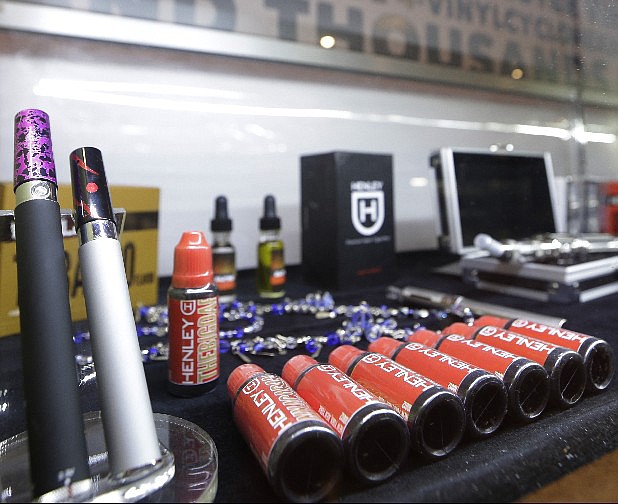Young adults today don't remember that "Winston tastes good, like a cigarette should," or that "you've come a long way, baby," if you smoke Virginia Slims cigarettes, or that they should "come to where the flavor is," in Marlboro country.
Indeed, the last televised cigarette ad ran on "The Tonight Show" at 11:50 p.m. on Jan. 1, 1971.
But today, actress and vaccine effectiveness denier Jenny McCarthy can be seen on television extolling the virtues of electronic cigarettes, the mostly metal, battery-powered cylindrical devices in which a heating element vaporizes a liquid nicotine solution and allows smoking, or vaping, in the way of traditional cigarettes.
Her love life has improved, she purrs about Blue e-cigs, her mouth doesn't taste like an ashtray, and she feels better about herself.
Indoor facilities where smoking is banned are increasingly allowing e-cigarettes, and work places that are tobacco-free are opening their doors to them, as well.
So, are they a harmless alternative to cigarettes, a way to get traditional smokers to quit or the same kind of threat as typical tobacco products?
Of course, that depends entirely on your study and your expert.
What seems to be clear, at least for those e-cigarettes containing a liquid nicotine solution, is while they offer less potential damage than traditional tobacco products, they're not harmless.
"Cigarettes have their risk profile," Dr. Frank Leone, a pulmonary expert at the University of Pennsylvania Medical Center in Philadelphia, said in Live Science. "And just about everyone who breathes understands the risks: circulatory disease and myriad cancers, for starters. E-cigarettes might be better off compared to that profile. But that doesn't mean they don't have their own risk profile."
The problem, Leone said, is their nicotine delivery rate, which goes right to the lungs instead of being more slowly released into the bloodstream as with nicotine gum or patches. It's more satisfying to the user, and therefore more addictive.
Once someone is addicted, he said, the body craves nicotine. And although the stimulant isn't the most dangerous toxin in tobacco -- and some e-cigarettes have no nicotine -- the chemical is still a cancer-promoting agent associated with birth defects and developmental disorders.
Indeed, a study published late last year in the journal Addictive Behaviors found most smokers who used e-cigarettes while they tried to quit either became hooked on vaping or went back to traditional cigarettes. And a November study in the journal The Lancet found no statistically significant difference in the merits of e-cigarettes over a nicotine patch in helping people quit.
Just last week, the Journal of American Medical Association Pediatrics found that middle- and high-school students who tried e-cigarettes had a greater likelihood of smoking conventional cigarettes.
It also seems clear the e-cigarette business is reaching out to children in the same way the tobacco industry did for years, emphasizing the cool factor of smoking (and now vaping).
A recent New York Times article, for instance, described the sub-genre of e-cigarettes known as "hookah pens," "e-hookahs" or "vape pipes" popular with young people. While they're available in candy flavors and come in a variety of colors, they're virtually identical to e-cigarettes in their amounts of nicotine and content of other chemicals.
And many young people in grades 6-12, whose use of such products more than doubled between 2011 and 2012, according to the Centers for Disease Control and Prevention, don't associate the products with e-cigarettes because they maintain they're using something else entirely.
Further, e-cigarettes are advertised along with tobacco products and candy and peddled openly toward young people in convenience stores, magazines and movie theater advertising.
In an egregiously overregulated country, it seems disingenuous to suggest some sort of regulation for e-cigarettes. But, with the little known about the extent of long-term damage from the products, the poisonous substances found in some e-cigarettes (formaldehyde and diethylene glycol, an ingredient in antifreeze, in one Food and Drug Administration study) and their massive increase in use among young people, it would be prudent to at least pass legislation to keep them out of the hands of minors as all 50 states have done with the sale of tobacco products.

